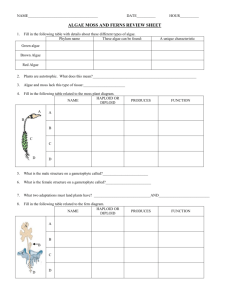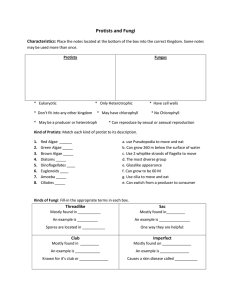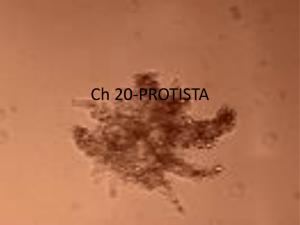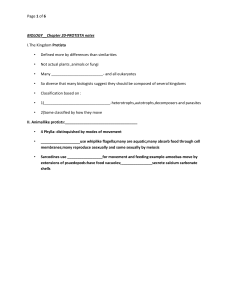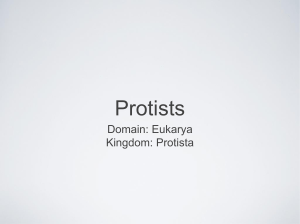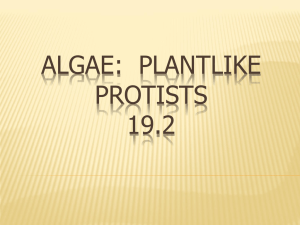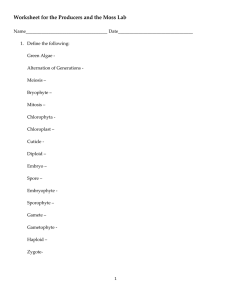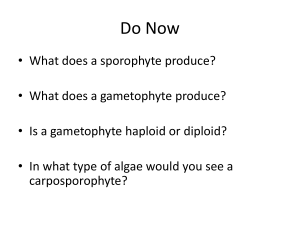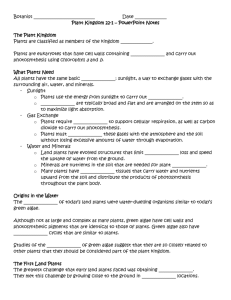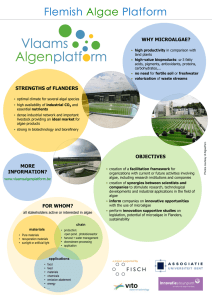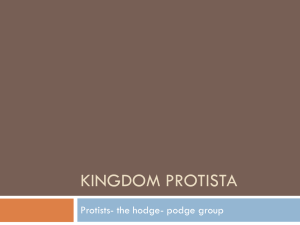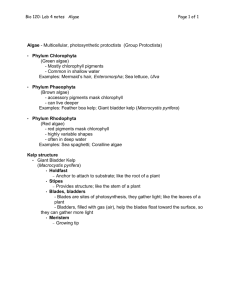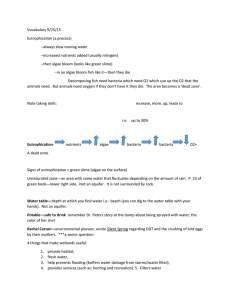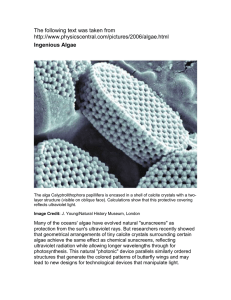22-1 Reading Guide
advertisement
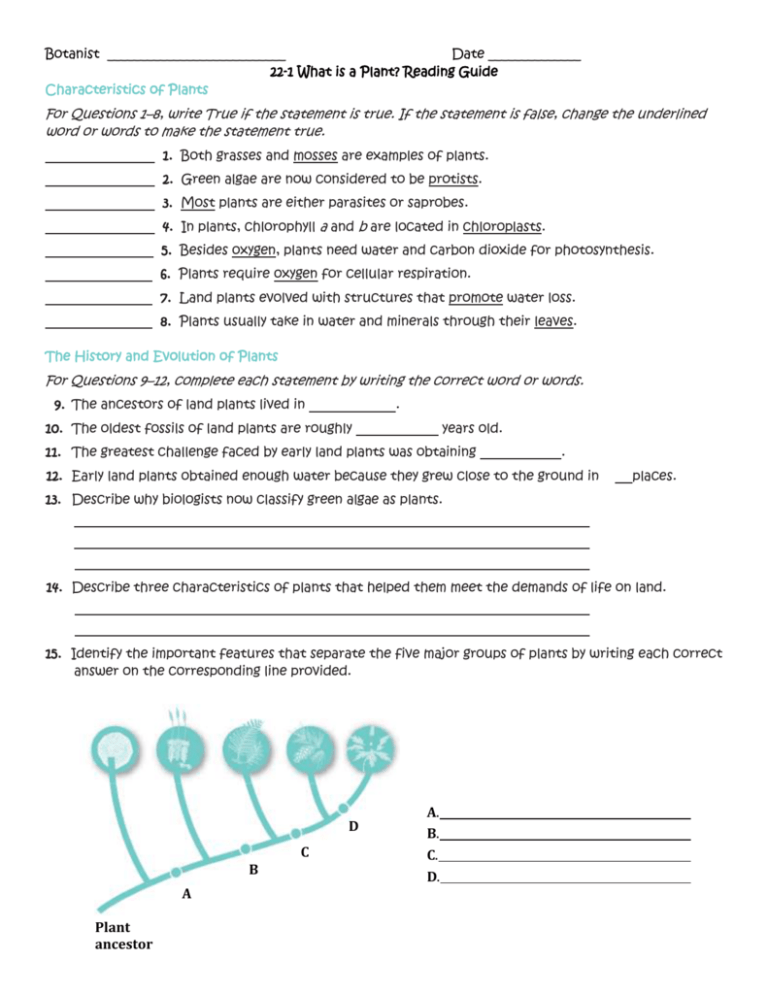
Botanist ___________________________ Date ______________ 22-1 What is a Plant? Reading Guide Characteristics of Plants For Questions 1–8, write True if the statement is true. If the statement is false, change the underlined word or words to make the statement true. 1. Both grasses and mosses are examples of plants. 2. Green algae are now considered to be protists. 3. Most plants are either parasites or saprobes. 4. In plants, chlorophyll a and b are located in chloroplasts. 5. Besides oxygen, plants need water and carbon dioxide for photosynthesis. 6. Plants require oxygen for cellular respiration. 7. Land plants evolved with structures that promote water loss. 8. Plants usually take in water and minerals through their leaves. The History and Evolution of Plants For Questions 9–12, complete each statement by writing the correct word or words. 9. The ancestors of land plants lived in . 10. The oldest fossils of land plants are roughly years old. 11. The greatest challenge faced by early land plants was obtaining . 12. Early land plants obtained enough water because they grew close to the ground in places. 13. Describe why biologists now classify green algae as plants. 14. Describe three characteristics of plants that helped them meet the demands of life on land. 15. Identify the important features that separate the five major groups of plants by writing each correct answer on the corresponding line provided. D C B A Plant ancestor A. B. C. D. The Plant Life Cycle 16. What is the shift between haploid and diploid phases in the sexual life cycle of a plant called? 17. Complete the diagram below by writing the name of each phase in a plant’s life cycle. Also indicate whether the phase is haploid (N) or diploid (2N). The Plant Life Cycle Spores (N) Plant (______________________) Plant (______________________) Sperm (N) Eggs (N) 18. What evolutionary trend is observable in the relative sizes of the stages in the life cycles of plants, starting with green algae and ending with seed plants? Apply the Big idea 19. Would a type of algae that has only chlorophyll a be considered a plant? Explain your answer.



